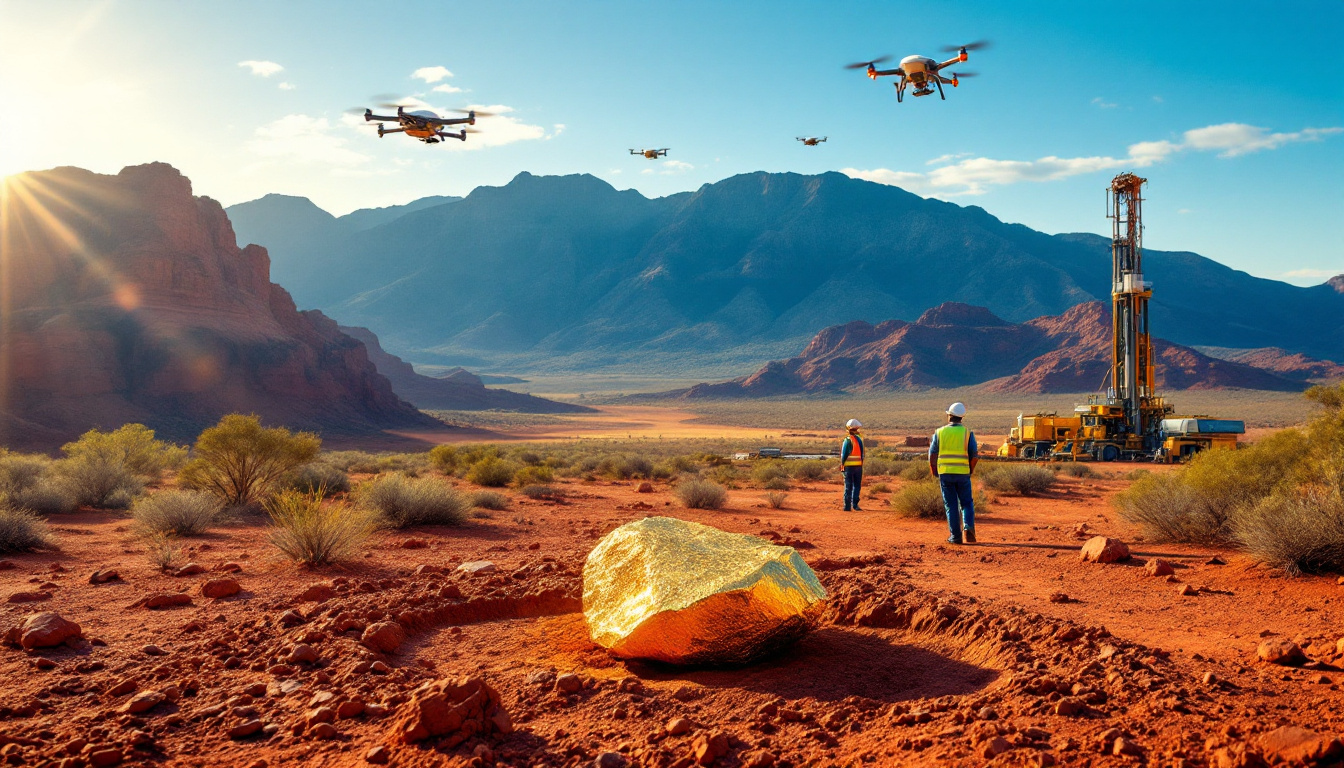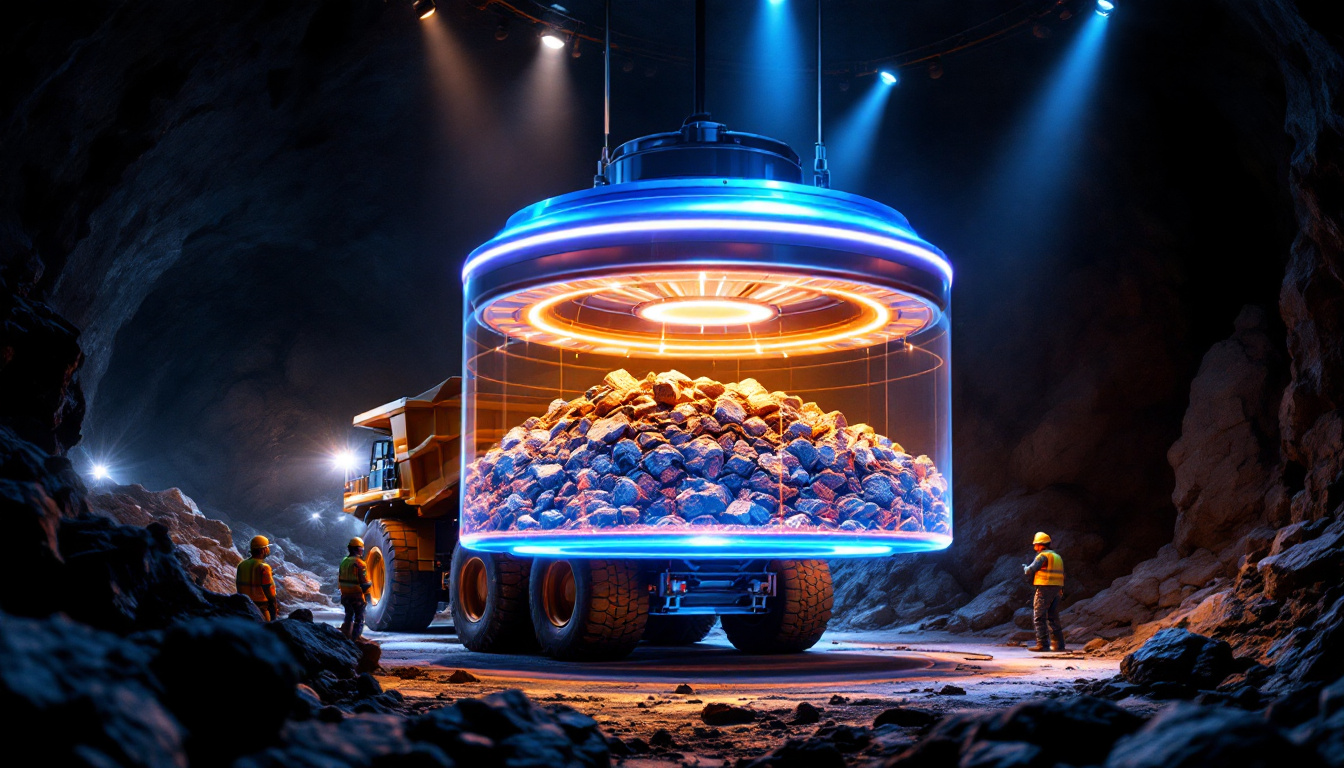What Is Natural Capital in Mining Operations?
Natural capital forms the foundation of mining operations, representing the essential resources that are converted into economic value throughout the mining process. These resources aren't just inputs to a system—they're critical assets that determine a mining operation's long-term viability and profitability.
Mining companies fundamentally transform natural capital resources—ore bodies, water access, tailings disposal capacity, air quality, and energy resources—into the metals and minerals that power modern life. As mining expert Benjamin Cox explains, "We are in the business of converting natural capital into economic capital. The question is: can we do it better?"
Water represents perhaps the most undervalued natural capital asset. Typically priced at around $1 per cubic meter, optimized water usage can unlock between $80-300 in revenue—a staggering return on investment that most operations fail to track properly. This disconnect between cost and value creation exemplifies the industry's historical blindness to natural capital optimization.
Ore bodies themselves, while obviously central to mining's pivotal role in the clean energy transition, lack proper accounting valuation. Despite being the primary asset that mining companies exploit, their true worth as natural capital is rarely reflected in financial statements, leading to sub-optimal extraction decisions and recovery rates.
As global demand for critical minerals continues to rise—with copper demand projected to double or triple for the clean energy transition—the mining industry's approach to natural capital will determine whether it can sustainably meet society's needs.
Why Are Traditional Mining KPIs Insufficient?
The mining industry has long relied on a narrow set of financial metrics that fail to capture the full value of natural capital assets. Traditional Key Performance Indicators (KPIs) like cash costs, all-in sustaining costs (AISC), and production per employee provide useful but incomplete pictures of operational success.
These traditional metrics create significant blind spots. Water licenses, despite their critical importance to operations, aren't valued on balance sheets. Tailings dam permits have no assigned financial value, even though they represent billions in potential economic activity. Ore bodies themselves—the very reason mining companies exist—lack proper accounting valuation under International Financial Reporting Standards (IFRS).
"Ninety percent of the things that show up on a mining company balance sheet are not accounted for," notes Cox, pointing to a fundamental gap in how the industry assesses its assets and operations. This accounting failure leads to distorted decision-making that prioritizes short-term cost reduction over long-term value optimization.
This narrow focus leads to what University of British Columbia professor John Steen calls "garbage can decision making," where siloed thinking prevents holistic optimization. Departments become fixated on their own metrics without understanding how their decisions affect downstream processes or overall resource efficiency.
The financial obsession with unit cost reduction (like driving copper production costs down to $8,000-10,000 per ton) often overlooks opportunities to maximize the value extracted from each unit of natural capital employed—whether that's water, energy, or the ore body itself.
How Can Natural Capital KPIs Transform Mining Operations?
Implementing natural capital KPIs represents a paradigm shift from cost-centric to value-centric mining operations. These metrics reframe the fundamental question from "How cheaply can we produce?" to "How much value can we create from our finite resources?"
Key natural capital metrics include tons of copper produced per cubic meter of water, revenue generated per ton of wet tailings, revenue per kilowatt of energy consumed, recovery percentage from ore processed, and tailings grade composition. These KPIs provide a comprehensive view of operational efficiency that traditional financial metrics simply cannot capture.
The power of these metrics lies in their ability to change decision frameworks. When a tailings dam is viewed not just as an expense but as an asset that can generate "$20 billion versus $1 billion" in value through optimized recovery and reprocessing, it fundamentally changes how companies approach tailings management.
Progressive mining companies are already demonstrating the value of this approach. Some Chilean operations have implemented AI-driven water monitoring systems that have reportedly achieved 15% higher recovery rates while reducing water consumption—creating substantial value from the same natural capital inputs.
Recovery rate optimization represents one of the most powerful natural capital KPIs. By maximizing the percentage of valuable minerals extracted from ore, companies simultaneously reduce tailings volume, minimize environmental impact, and increase revenue—a true win-win scenario that traditional KPIs might miss entirely.
As Cox emphasizes, these metrics shift focus from cost reduction to value maximization—an essential mindset change as ore grades decline globally and companies must extract more value from each ton of material moved.
What Are the Most Undervalued Assets in Mining?
The mining industry consistently undervalues several critical assets that drive long-term value creation. Understanding these undervalued assets is essential for optimizing mining operations and asset valuation and securing sustainable returns.
Water resources stand at the top of the list of undervalued assets. Often priced at just $1 per cubic meter but capable of unlocking $80-300 in revenue when optimized, water represents a massive opportunity for value creation. Simple improvements in thickener control systems or hydrocyclones can generate hundreds of millions in additional revenue by maximizing the value extracted from each water unit.
Tailings capacity represents another chronically undervalued asset. Legacy licenses to dispose of billions of tons of slurry represent enormous value potential, especially as new permits become increasingly difficult to obtain due to environmental concerns and community opposition. Companies that view tailings facilities as assets to optimize rather than costs to minimize gain significant competitive advantages.
Human capital—the knowledge, expertise, and decision-making capabilities within an organization—remains perhaps the most significantly undervalued asset. The industry fails to optimize knowledge sharing across operational silos, leading to redundant systems and missed optimization opportunities. As Cox notes, getting the right people talking to each other can solve million-dollar problems during a single lunch conversation.
Social license to operate has immeasurable long-term value but rarely appears in financial statements. The ability to maintain productive relationships with host communities, governments, and other stakeholders directly impacts a mining company's ability to access resources, obtain permits, and operate efficiently. Yet traditional accounting methods provide no framework for valuing this critical asset.
These undervalued assets represent the frontier of mining optimization—where leading companies are gaining competitive advantages by recognizing and maximizing their value in ways that traditional operators miss entirely.
How Does Siloed Thinking Limit Mining Efficiency?
The mining industry suffers from extreme compartmentalization that creates substantial inefficiencies and missed optimization opportunities. These organizational silos prevent the holistic thinking required to maximize natural capital value.
Mine, mill, and smelter operations rarely communicate effectively, often operating as separate entities despite their interdependence. In one striking example shared by Cox, key departments at a major operation "hadn't met in 27 years," leading to suboptimal decisions that rippled throughout the value chain. This communication breakdown prevents the information sharing necessary to optimize the entire system rather than individual components.
Specialists in different technical areas—wet tailings versus dry stack, blasting versus crushing, water treatment versus water conservation—don't regularly share knowledge or coordinate decisions. This leads to technological solutions for problems that could be solved through simple communication. Cox cited a case where a $20 million problem was solved during a lunch break simply by getting different departments to talk to each other—demonstrating the enormous cost of siloed thinking.
Water resources typically have "seven or eight different owners" within a single operation but no single optimization authority. This fragmented responsibility structure makes holistic water management nearly impossible, leading to redundant systems and missed efficiency opportunities.
Forward-thinking companies like BHP have begun implementing digital transformation in mining projects that provide visibility across operational silos, reportedly achieving cost savings of around 12% while improving resource efficiency. These technological bridges help overcome organizational barriers that have historically limited mining efficiency.
Breaking down these silos requires both cultural and technological changes—shifting incentive structures to reward system-wide optimization, implementing shared information systems, and creating cross-functional teams with the authority to make decisions that maximize overall value rather than departmental metrics.
What Is "Value in Use" and Why Does It Matter?
The concept of "value in use" extends far beyond the market price of minerals to encompass their broader economic, social, and environmental impacts. This perspective transforms how mining companies evaluate their outputs and make operational decisions.
A ton of copper valued at $10,000 on the market enables far greater value creation throughout society—taking 4-5 people out of poverty, saving thousands of tons of carbon when used in renewable energy technologies, and supporting modern living standards, as each person requires between 80-250kg of copper for their daily lives. This multiplier effect represents the true value of mining outputs.
Understanding value in use allows mining companies to make better decisions about resource allocation and optimization. When evaluating concentrate grades, for example, a value-in-use perspective might favor lower-grade concentrates that enable higher overall recovery rates, creating more social benefit while potentially improving environmental performance.
Tesla's reliance on copper for electric vehicles and energy storage systems exemplifies this concept—the value copper creates in enabling clean transportation far exceeds its market price. Mining companies that understand this broader value chain position themselves as essential partners in addressing ESG challenges in mining operations rather than mere commodity suppliers.
Lifecycle analysis frameworks like ISO 14040 provide structured methodologies for quantifying value-in-use metrics, enabling companies to communicate their broader contributions beyond simple production volumes or financial returns. Progressive mining companies are increasingly incorporating United Nations Sustainable Development Goals into their reporting to demonstrate their contributions to global priorities.
By focusing on this broader value, mining companies can shift from cost-centric to value-centric decision frameworks, prioritizing investments that maximize societal benefit rather than merely minimizing production costs.
How Can Recovery Rates and Concentrate Grades Be Optimized?
Recovery rate optimization represents one of the mining industry's greatest opportunities for both economic and environmental improvement. Maximizing metal recovery reduces tailings volume, minimizes environmental impact, and increases revenue—aligning financial and sustainability goals.
The industry's traditional obsession with high-grade concentrates often proves environmentally and economically counterproductive. Higher concentrate grades frequently leave more sulfide materials in tailings dams, creating long-term environmental liabilities. As Cox argues, pyrite left in tailings creates approximately $100 per ton in negative liability, while sending it to smelters could generate carbon-free energy and reduce environmental risk.
Reconsidering smelter contracts that penalize lower-grade concentrates represents a critical step toward optimization. These contracts, negotiated decades ago under different economic and environmental conditions, often create perverse incentives that maximize concentrate grade at the expense of overall recovery and environmental performance.
Including metallurgists and ESG specialists in concentrate contract negotiations can help identify opportunities to align financial incentives with environmental goals. By rethinking these contractual relationships, mining companies can unlock significant value while reducing their environmental footprint.
Advanced sensing technologies enable real-time monitoring of recovery rates and tailings composition, allowing for dynamic adjustments to processing parameters. These technologies help operators maximize recovery while maintaining product specifications, creating substantial value from the same ore input.
Companies pioneering this approach report achieving recovery rate improvements of 3-5% through integrated decision-making and advanced process control—translating into hundreds of millions in additional revenue from the same natural capital inputs. This value-maximizing approach represents the future of optimizing mining operations and asset valuation.
What Role Does Education Play in Transforming the Industry?
Industry transformation requires developing new leadership with different priorities and perspectives. The educational foundation of tomorrow's mining leaders will determine whether the industry successfully adapts to changing global expectations and resource constraints.
Training future leaders who "look like the ore bodies" they manage—diverse, global, and representative of host communities—creates teams better equipped to navigate complex stakeholder relationships and social license challenges. Cox's executive education program has trained over 350 mining professionals in the past year—reportedly more than all US mining schools combined—focusing on diverse, global representation to drive industry change.
Cross-disciplinary education breaks down the silos that have historically limited mining efficiency. Future mining professionals need training across traditionally separate disciplines—from geology and metallurgy to water management and community relations—to develop the holistic thinking required for natural capital optimization.
Educational programs specifically focused on natural capital valuation and optimization prepare mining professionals to implement new KPIs and decision frameworks. Understanding how to value water licenses, tailings capacity, and social license to operate enables more comprehensive asset valuation and optimization.
Industry-academia partnerships that combine theoretical frameworks with practical application accelerate innovation and knowledge transfer. These collaborations help translate cutting-edge research into operational improvements while ensuring academic programs remain relevant to industry needs.
As demographic shifts reduce the available talent pool in traditional mining regions, education becomes even more critical for maintaining operational capability and driving innovation. Companies investing in strategic investments in human capital for mining gain significant advantages in talent recruitment, retention, and operational performance.
How Will Future Trends Impact Mining Operations?
Several major trends will force mining to evolve, creating both challenges and opportunities for companies prepared to adapt. Understanding these trends is essential for strategic planning and investment decisions.
The industry needs to find "one Quebrada Blanca 2-sized ore body per year" just to offset grade degradation, creating enormous pressure to improve recovery rates and processing efficiency. As easily accessible, high-grade deposits become increasingly rare, the ability to extract maximum value from lower-grade resources becomes a critical competitive advantage.
Copper supply must double or triple to support global energy transformation goals, placing unprecedented demand on mining operations while simultaneously increasing scrutiny of their environmental and social impacts. This tension between growing demand and rising sustainability expectations creates both urgency and complexity for mining operations.
Population demographics are shifting dramatically, making human capital increasingly valuable and difficult to secure. Aging workforces in traditional mining regions, combined with changing career preferences among younger workers, create talent challenges that only forward-thinking companies will successfully navigate.
Technology adoption will accelerate as battery technology improves and enables more remote, automated operations. Increased electrification reduces carbon footprints while enabling new operational approaches that maximize efficiency and minimize environmental impact.
Climate change impacts will directly affect mining operations through water scarcity, extreme weather events, and changing energy availability. Companies that proactively address these challenges through resilient infrastructure and adaptive management practices will maintain operational continuity when others face disruptions.
Growing investor focus on ESG performance creates both pressure and opportunity for mining companies to demonstrate responsible natural capital management. Those leading in decarbonisation in mining for a sustainable future gain access to capital at favorable rates while building stakeholder trust that enables operational flexibility.
What Simple Changes Can Mining Companies Implement Today?
Mining companies can begin optimizing operations immediately through straightforward changes that require minimal capital investment but deliver substantial returns. These practical steps create momentum for broader transformation.
Tracking natural capital KPIs alongside traditional financial metrics provides immediate visibility into optimization opportunities. Simple metrics like tons of copper per cubic meter of water or revenue per ton of tailings can be implemented using existing data systems, creating baseline measurements for improvement.
Breaking down silos between operational departments—through cross-functional teams, shared information systems, or even regular lunch meetings—unlocks immediate efficiency gains. As Cox's example demonstrated, getting the right people talking to each other can solve million-dollar problems with minimal investment.
Including metallurgists and ESG specialists in concentrate contract negotiations ensures these agreements reflect both technical recovery opportunities and environmental considerations. This integrated approach aligns financial incentives with sustainability goals, creating value through improved contract terms.
Focusing on recovery rates rather than concentrate grades often improves both financial returns and environmental performance. This shift in priorities can be implemented immediately through operational parameter adjustments and performance incentive realignment.
Approaching stakeholder relationships with kindness and understanding builds the social capital necessary for operational flexibility and community support. As Cox emphasizes, "Be kind… The average person is under so much stress right now because the world is just not kind right now."
Implementing real-time monitoring of critical natural capital inputs—especially water and energy—provides the visibility necessary for optimization. Simple sensors and dashboards can identify inefficiencies and track improvements without requiring complex systems integration.
These practical steps create immediate value while building the foundation for more comprehensive transformation of mining operations. Companies that successfully implement these changes position themselves for leadership in an industry undergoing fundamental transformation.
FAQ: Optimizing Mining Operations
How does water usage impact mining economics?
Water typically costs around $1 per cubic meter but can unlock $80-300 in revenue when optimized properly. This exponential value creation makes water one of mining's most undervalued assets. Investing in thickener control systems or better hydrocyclones can yield hundreds of millions in additional revenue by maximizing the value extracted from each water unit. As water scarcity increases globally, efficient water usage becomes both an environmental necessity and a competitive advantage.
Why are traditional accounting standards inadequate for mining?
International Financial Reporting Standards (IFRS) fail to value critical mining assets like water licenses, tailings capacity, and ore bodies, leading to decisions that optimize financial costs but ignore natural capital depletion. This accounting gap creates "garbage can decision making" where siloed departments optimize their own metrics without understanding system-wide impacts. Ninety percent of mining balance sheet items reportedly lack proper valuation, creating massive blind spots in decision frameworks.
How can mining companies improve their social license to operate?
By breaking down internal silos, communicating effectively with communities, and recognizing that local stakeholders have legitimate claims to natural resources, companies can maintain better relationships with host communities. Training diverse leadership teams that "look like the ore bodies they manage" creates cultural competence that strengthens community relationships. Approaching stakeholder engagement with kindness and transparency builds the trust necessary for operational continuity, while sharing broader value-in-use metrics demonstrates mining's contribution to social development.
What is the relationship between concentrate grade and environmental impact?
Higher concentrate grades often leave more sulf
Want to Discover the Next Major Mining Opportunity?
Gain the investment edge with Discovery Alert's proprietary Discovery IQ model, which identifies significant ASX mineral discoveries in real-time and translates complex data into actionable insights. Visit the Discovery Alert discoveries page to see how historic mining discoveries have generated substantial returns for early investors.




